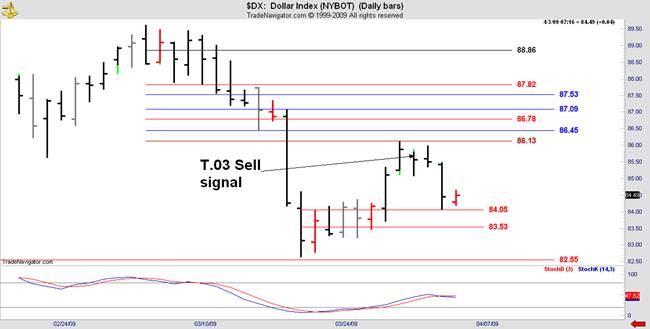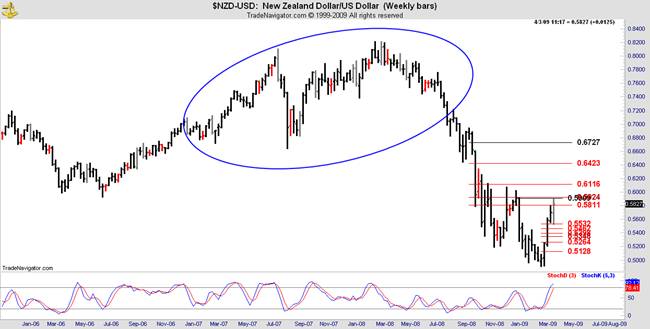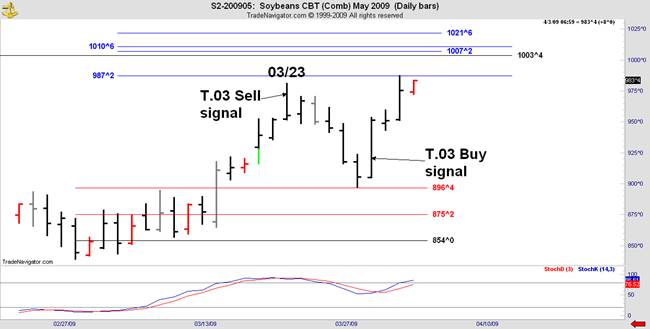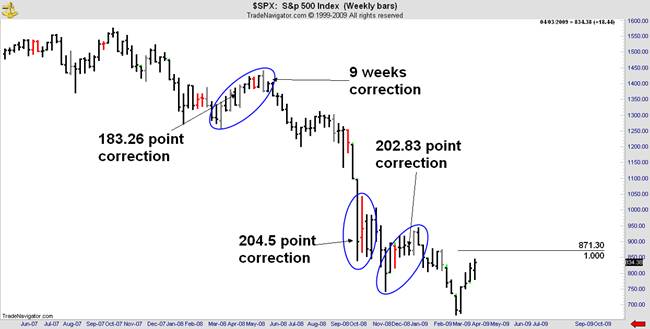In my previous article I warned that the greatest transfer of wealth in recent history was about to get underway, with the announcement by Treasury Secretary Geithner of the so called Public-Private Investment Program, the PPIP, which aims to rid banks and markets of the distressed assets and toxic loans still ticking away like an inevitable time bomb on the balance sheets of major institutions.
The Shell Game in its original form involved 3 Walnut shells, under one of which a pea was hidden. Sleight of hand whilst the shells were swiftly moved around resulted in the other player, the punter, becoming confused as to where the pea lay and this game became a popular form of wagering and entertainment for the masses.
The modern version of the Shell Game, as used by the leaders of the Government’s financial team uses a much more sophisticated version but the basic purpose is the same. By homologating a number of government agencies together under the shells, the punters, in this case US taxpayers are prevented from seeing either the whereabouts or the size of the pea hidden within. For the average punter, the various rapid fire announcements of bailouts, transfers and recourse plans emanating from several Federal agencies together with an almost total lack of Congressional oversight have muddied this particular playing field, mightily.
.8 Trillion so far
If you think you have been keeping track of the various sums of bailouts and industry specific assistance handed out by the US Government and its various functionaries so far you are almost certainly wrong. I stated in an earlier article that the nexus between Treasury, the Fed and other government servants was muddying the waters, and obscuring the extent of the taxpayers’ largess to almost exclusively financial institutions. Bloomberg data now shows that the government and Fed have spent, lent or committed .8 trillion, an amount that approaches the value of everything produced in the country last year, to stem the longest recession since the 1930s. Did you get that number? That’s Trillion with a “T”. Bloomberg News 04/02/09
Internationally the world’s largest institutions have only written off .3 Trillion (“only” is a very relative concept here), so where has the rest gone? I have no reason to doubt Bloomberg’s data, indeed they are one of a very few who have the resources to collate the myriad of transactions that make up this total, but given the angst and gnashing of teeth that accompanied the TARP and other Congress mandated bailouts, you can see that like an iceberg, the vast bulk of these facilities are undertaken other than in the light of day and under Congressional supervision. A nice example of how these things happen is in the adventures of Maiden Lane LLC, an entity formed to fund JP Morgan’s liquidation of Bear Stearns. Now that entity is to be assumed by Treasury, from the Fed who used a doubtful legal authority to create and fund it initially, so the round robin, devoid of oversight, has accomplished the purpose of Fed and Treasury largely out of sight.
You recall that Treasury and the Fed have refused to disclose the details and circumstances of the payouts to AIG counterparties. Against this background of fiscal tricks, legerdemain and non disclosure, Geithner’s planned PPIP is going to make AIG’s antics look positively prudent.
The PPIP is a many headed monster in the cast of the mythological Greek figure Medusa. It seeks to do many things, but mainly to give the Treasury and US Government cover, as it again undertakes what Hank Paulson quailed at; the purchase by the public purse of toxic securities from banks and other institutions at many times their true value. Last September in my article “The Tinkerbell Treasurer” written exclusively for Financial Sense, I set out for you the simplicity of the proposition that Paulson faced and which eventually he failed to tackle, probably fuelled by a well honed sense of preservation.
That article argued that there were only two alternatives to the massive losses racked up by the marketers, primarily of mortgage backed securities although other asset classes found a place in the packaged CDOs that were cousin to the mortgage backed securities. Those alternatives were to allow the losses to be realised which was politically unacceptable as it would finally lay bare the true insolvency of numerous big name banks and other financial institutions; or for the US Government in one guise or another to purchase those toxic securities at many times their market value, thus handing a “get out of jail free” card to these already loathed institutions. At that realisation, even a giant of a man and Wall Street legend, Hank Paulson’s courage failed him. And thus it was left to the hapless Timothy Geithner to undo the gorgonian knot.
There is more than a touch of irony that this duty fell to Geithner, who as Governor of the NY Fed was the supervisor most absent from duty when these farces were being staged and played out, but in furtherance of the aims of his constituency, the major banks, Geithner has cobbled together a series of measures that aim to artificially inflate the price of residential housing, purchase the distressed assets from the chosen players at many times their market value and provide a screen behind which the Government can fudge accountability for this massive economic transfer which is just econospeak for “gift”.
While this is being trumpeted as no less than a win-win-win situation by Bill Goss of PIMCO, one of Treasury’s anointed, it is highly likely to be yet another loss-loss-loss for the US public, and that means you, sport.
The PR version of the game goes like this:
April 2 (Bloomberg) Geithner’s Public-Private Investment Program, or PPIP, promises to boost prices enough to encourage banks, insurers and hedge funds to sell their mortgage holdings, freeing them to make loans while creating a potential windfall for investors. Geithner’s plan encourages investors to buy as much as trillion of real-estate assets by using billion to 0 billion provided by the Treasury and government loans. The goal of the Fed and the Treasury since September has been to cleanse banks of troubled assets. The Treasury would match the money asset managers raise to join them in public-private funds. The Federal Deposit Insurance Corp. would guarantee borrowing offered to funds buying loans, while the Treasury and Fed would offer financing to mortgage- securities buyers. The Fed loans may be made available to investors that are not part of the public-private funds.
The real world version has a number of less palatable levers that are telling because they continue to highlight the mindset that leverage is the best tool and crony capitalism the best way to dispense patronage. Just the mindset that the myopic Greenspan and Bernanke relied on in their belief that major banks and other financial institutions were smart, trustworthy corporate citizens who knew how far they could push the accelerator. Consider some of the less reported features of the PPIP:
- Purchasers will contribute very little equity or “skin”. Perhaps as little as 3% of the purchase price.
- Purchasers will be paid unspecified fees for bidding, cynically perhaps close to the equity value they provide.
- Sellers will be paid fees for selling, cynically perhaps as much as their realised losses on the transaction in one guise or another. The stated aim, after all, is to make these institutions whole and replenish capital so nothing is off the table.
- 95% of the purchasers’ obligations in buying these assets will be provided by Treasury on a non-recourse basis. That means that any losses, and there will likely be plenty of those, are for your account as taxpayers; no risk to the purchasers.
- Unlike Geithner’s plan for loans, the public-private funds for securities will be limited initially to only five managers, such as Pimco and BlackRock, already overseeing billion of the assets targeted. That program will buy securities from holders of toxic assets other than banks.
With recourse loans, “toxic” mortgages which have a hypothetical 40 percent annual default probability and only 10 percent expected recoveries, would be worth only 19.7 cents. The type of loans that may be sold, New York-based Citigroup analyst said in a March 27 report, include billion of commercial mortgages that are probably carried on the books of banks at 65 cents to 75 cents on the dollar because they were meant to be packaged into bonds.
As usual the sensible calls of alarm from knowledgeable dissenters only made the fine print. Nobel prize-winning economists Paul Krugman, a professor at Princeton University in Princeton, New Jersey, and Joseph Stiglitz, a professor at the Business School of Columbia University in New York, blasted Geithner’s plan for putting the taxpayer on the hook for losses with what they say is little likelihood of success. “The Geithner plan works only if and when the taxpayer loses big time,” Stiglitz wrote in the New York Times this week. “With the government absorbing the losses, the market doesn’t care if the banks are ‘cheating’ them by selling their lousiest assets, because the government bears the cost.”
The valuations of these securities with or without recourse funding is stupefying and doesn’t advance the argument. In essence what Geithner has constructed for his mates, is a premium free option on a bunch of toxic assets if they will but warehouse them to get them off the banks’ books. That mechanism allows vastly inflated prices to be paid which enhances the fiction that the bank losses are far less than reality. And it gives the anointed players a risk free carry that may well pay off and at any rate earns substantial fees.
Hidden quietly in the middle of the AIG shouting match was the quiet roll over of the Financial Accounting Standards Board to the demands of House Democrats:
March 30 (Bloomberg) -- Four days after U.S. lawmakers berated Financial Accounting Standards Board Chairman Robert Herz and threatened to take rulemaking out of his hands, FASB proposed an overhaul of fair-value accounting that may improve profits at banks such as Citigroup Inc. by more than 20 percent. The changes proposed on March 16 to fair-value, also known as mark-to-market accounting, would allow companies to use “significant judgment” in valuing assets and reduce the amount of write downs they must take on so-called impaired investments, including mortgage-backed securities. FASB’s acquiescence followed lobbying efforts by the U.S. Chamber of Commerce, the American Bankers Association and companies ranging from Bank of New York Mellon Corp., the world’s largest custodian of financial assets, to community lender Brentwood Bank in Pennsylvania.
Former regulators and accounting analysts say the new rules would hurt investors who need more transparency, not less, in financial statements. Companies weighed down by mortgage- backed securities, such as New York-based Citigroup, could cut their losses by 50 percent to 70 percent.
So if you are wondering what is inspiring the present US Equities rally, look no further. A little massaging of balance sheets and the transfer of shareholders’ losses to the American public will always be looked on as a good deal for Wall Street. Assurances that the same old Shell Game will continue as before, were of course heart warming news to the same old players who but for the Government’s insistence in avoiding the intended consequences of the bankruptcy laws would long ago have departed.
America, UK, Europe and the great Lands Down Under enjoy characterising themselves as countries of laws. Indeed the Rule of Law is the backbone of civilised nations. That the laws are selectively applied at the highest levels is one of the principal understandings of promoters of the Shell Game. Despite protestations to the contrary, the game never changes. Just shells and a pea.
Trading Markets-DX
Many better minds than mine have averred the downfall of the mighty US Dollar as a rational response to untrammelled deficit spending, goosed by artificially low interest rates and asset price manipulation which is official policy in not only US but literally, in all countries that have the financial capacity to run the tricks. I have argued for the past year, since the Danielcode presciently forecast the March 2007 low in DX to a margin of just 2 ticks on Financial Sense in February 2007, that we favoured a rally to at least 90.22, the last level of Danielcode resistance in the swing from November 2005.
So far the rally peaked almost exactly 12 months after its historic low in March 2007 at 89.63, about half a point from our longer term target.
The Danielcode number sequence is wholly mechanical and not subjective, but I have assumed from an entirely non technical perspective, and perhaps with shades of Mr Greenspan’s naivety, that the US would act in its own best interest and the pressing problem is a continuation of Bond sales to fund the now rapacious deficit. The musings of a reasonable man (he of the Clapham Omnibus, for those who know), lead me to the view that maintenance of USD or DX as we usually measure it (DX is the US Dollar Index, a trade weighted group of currencies), was a paramount pin underlying Secretary Clinton’s plaintive appeal to China to keep buying US debt. Yesterday’s announcement of a high level task force including Ms Clinton and headed by Mr Geithner to co-ordinate trade and fiscal arrangements with China, stresses the importance of this relationship. But while logic dictates a strong DX, the chart is sending out warning signals.
Tuesday’s T.03 Sell signal gave us a day’s indigestion with Wednesday’s rally back move but on Thursday traction for the Sell signal was gained for a nice trading result. From the weekly chart above, however, the struggles to reach its 90.22 target are obvious and you will notice that since the previous high in November the biggest bars have all been to the downside. That is not how bull markets trade, indeed that pattern is the hallmark of a market being forced or supported.
An almost identical pattern can be seen in the weekly chart of the New Zealand Dollar a carry trade favourite. You can see the big downside bars in the pullback from the penultimate top in July 2007, and the subsequent “forcing” to a marginal new high in February 2008. You can also see how that bit of business was resolved.
This is the fate that awaits the mighty USD unless massive forces are deployed on its behalf. Hopefully Mr Geithner will have time from his other asset levitating tricks to include DX on his list of “whatever it takes” rescues!
Commodities
This week has seen Danielcode traders immersed in the Commodity trades with our proprietary T.03 time turn signals generating a but signal in Wheat on Monday, buys in Corn and Soybeans on Tuesday and a buy signal in Crude Oil for Thursday. This is how they turned out:
Trifectas (1st, 2nd and 3rd in a horse race) are always a special pleasure for traders and punters alike. The quadrella (first 4 horses across the line) is a greater rarity but in trading the T.03 signals it is something we see with a high degree of frequency, quite outside the implied probabilities.
S&P
In my previous article for Financial Sense I described how the Danielcode had called the 03/06 low in S&P at 665.7, to the day and a few ticks. As that market continues its climb from the awful 666 number, apparently unabated by negative economic news, the next important milestones for us to observe are an overbalance of time and price, WD Gann’s time honoured rule to determine a change in trend. I caution you that “trend” is a subjective term unless linked to a time period so what may be a change of trend on a daily chart, may only be a correction on a weekly chart etc. In fact Gann claimed that at any given time there are always two separate trends apparent in all markets, but for the sake of our observations let’s use the weekly index or $SPX charts.
To fulfil Mr Gann’s definition, what we are seeking is a bigger points move than any other correction since the October 2007 high, and a correction of longer duration than any since the high. Quite precise really.
That means that we need a rally that lasts longer than 9 weeks and reaches at least 971.40. Quite feasible given the current level of steroids being administered to financial stocks. Note that this definition works on points, not percentages, so we now have a simple and identifiable target for what will denote a change of trend. At least to Mr Gann’s satisfaction.
Super Trader’s Seminar #3
Last week I had the pleasure of hosting 5 Danielcode members at the 3rd Super Trader’s Seminar of the year. Many of you were interested in our adventures last time around and this event was equally amazing. This eclectic mix comprised a grizzled and cynical old stock broker from Perth, Western Australia who with 23 years experience in the hot house of a commercial brokers’ offices, has seen and done it all; a retired Chemist from a little town outside Zurich, Switzerland and 3 Americans, 2 from Redding CA and another from Atlanta, Georgia. To further enhance this potentially explosive mix they comprised a working missionary who is taking a sabbatical after 7 years preaching and healing in China, a sometime missionary deeply involved in charismatic healing, a powerhouse prayer machine and All American jock, a heathen whose family has never owned a bible and a lapsed Protestant, married to an exquisite Thai lady who is a devout Buddhist!
How did that all work out? Well it loses much in the telling, but I can tell you that the Thai lady’s Buddhist monk was duly consulted and urged our Swiss friend to make the pilgrimage (a very long trip from anywhere but particularly Switzerland) to New Zealand for the Danielcode seminar; the US missionary converted our heathen Australian friend and baptised him in one of the many hot springs on the edge of the Great Lake, and thus armed and amazed we completed the teaching incubator and took to the waters for our Thursday fishing expedition.
At our first seminar of the year, in February, after a slow few hours of fishing I announced to the boat and its crew that the next minor Danielcode cycle would tick over at 6:18 PM local time or 18:18 and that’s when the best fish of the day would be landed, and so it was, to the minute. At the 2nd seminar on 03/12 I repeated the prediction. Lake Taupo has no tidal flows so apparently no adjustments to the time were necessary, and the noble trout again obliged at precisely 18:18 hours. For last week’s fishing expedition I set a schedule for the team and after all had caught a fish (other than our Zurich friend who abhors the killing of any creature, in the Buddhist tradition) the boys asked me to take the rod for the next fish. I demurred, politely advising that the Danielcode fish would be arriving for me at precisely 18:18. Again, the noble fish arrived on time to the minute. Another trifecta! Roger H, the missionary, habitually has his watch 10 minutes fast. It was 10 minutes fast when he got on the boat that day, and 10 minutes fast when he got off. But at the time the 18:18 fish was caught, his watch matched a very expensive quartz watch worn by his colleague but showed 18:18 for the whole 3 minutes that it took to land the fish.
And that’s only the most believable part of those 4 days in March. Day after day we saw signs and wonders as a small group of men from very different backgrounds, education and belief systems came together to learn, observe and wonder. And loved every minute of each other’s company. And the freshly baked trout, and the curries and the ice cold beer, And more. Heathen, Buddhist, Protestants and “Way beyond Evangelicals” were made as one, for that time.
Roger the missionary, averred that he had seen my house in a dream before he had ever heard of the Danielcode. He drew the house on a hill by the Great Lake, complete with our little beach and white pumice cliffs. Beside the house, in his dream, was a helicopter. I was amazed when I saw his drawing and said that it was incredibly, factually correct, except that the helicopter landing pad is just across the harbour channel about 150 feet away. He replied “NO. Not the helicopter pad, the blue helicopter that is parked 3 properties down the lane. And so it was. I have never seen it before in the 8 years we have lived in this house and my guess is it will never be here again. But like trading, the future is not ours to see!
My Atlanta friend commented wryly on his return to US, that in regaling friends and acquaintances of his adventures Down Under “it doesn’t translate”.
I reminded him that Our Lord observed to a nobleman in Cana almost 2000 years ago, that unless he saw the signs and wonders for himself, he would not believe. Apparently in Jesus’ time, as now, it is not enough to hear about these things. The human spirit was and is, so crass, that you must actually observe them or experience them for yourselves, in order to believe.
What a shame.
This week I have added GLD the Gold tracking stock to the large list of markets I cover. For the next fortnight the Danielcode number sequence GLD charts are available free to Financial Sense readers. They are located for the time being in a PDF linked to the light blue and gold box on the DC landing page. You will need to scroll down past the current GLD and commodities video to find it. We have a large number of members who trade spot Gold or CBOT Gold, or GLD, and the DC numbers created for the Comex Gold market that I have covered since last year do not translate either, so for those of you who trade GLD or spot Gold, I hope the new GLD charts are useful.
The GLD trade entry signals follow the Comex Gold T.03 daily signals plus the alternate trade entries from signals in HUI or Comex Silver. Importantly the perils and solutions to trading a chart as “gappy” as GLD are explained in our current trading video at the Danielcode website. I invite you to visit us.
John 4:48 Then said Jesus unto him, Except ye see signs and wonders, ye will not believe.
Copyright © 2009 John Needham















